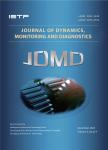Residual Convolution Long Short-Term Memory Network for Machines Remaining Useful Life Prediction and Uncertainty Quantification
作者机构:Key Laboratory of Education Ministry for Modern Design&Rotor-Bearing SystemXi’an Jiaotong UniversityXi’anChina Department of Electronic and Electrical EngineeringBrunel University LondonUxbridgeUK School of Mechanical EngineeringXi’an Jiaotong UniversityXi’anChina
出 版 物:《Journal of Dynamics, Monitoring and Diagnostics》 (动力学、监测与诊断学报(英文))
年 卷 期:2022年第1卷第1期
页 面:2-8页
学科分类:07[理学] 0701[理学-数学] 070101[理学-基础数学]
基 金:This research was supported by National Natural Science Foundation of China(52005387,52025056) Project funded by China Postdoctoral Science Foundation(2020M673380) Fundamental Research Funds for the Central Universities
主 题:Deep learning residual convolution LSTM network remaining useful life prediction uncertainty quantification
摘 要:Recently,deep learning(DL)has been widely used in the field of remaining useful life(RUL)*** various DL technologies,recurrent neural network(RNN)and its variant,e.g.,long short-term memory(LSTM)network,have gained extensive attention for their ability to capture temporal *** existing RNN-based methods have demonstrated their RUL prediction effectiveness,they still suffer from the following two limitations:1)it is difficult for the RNN to directly extract degradation features from original monitoring data and 2)most RNN-based prognostics methods are unable to quantify RUL *** address the aforementioned limitations,this paper proposes a new prognostics method named residual convolution LSTM(RC-LSTM)*** the RC-LSTM,a new ResNet-based convolution LSTM(Res-ConvLSTM)layer is stacked with a convolution LSTM(ConvLSTM)layer to extract degradation representations from monitoring ***,under the assumption that the RUL follows a normal distribution,an appropriate output layer is constructed to quantify the uncertainty of prediction ***,the effectiveness and superiority of the RC-LSTM are verified using monitoring data from accelerated bearing degradation tests.



